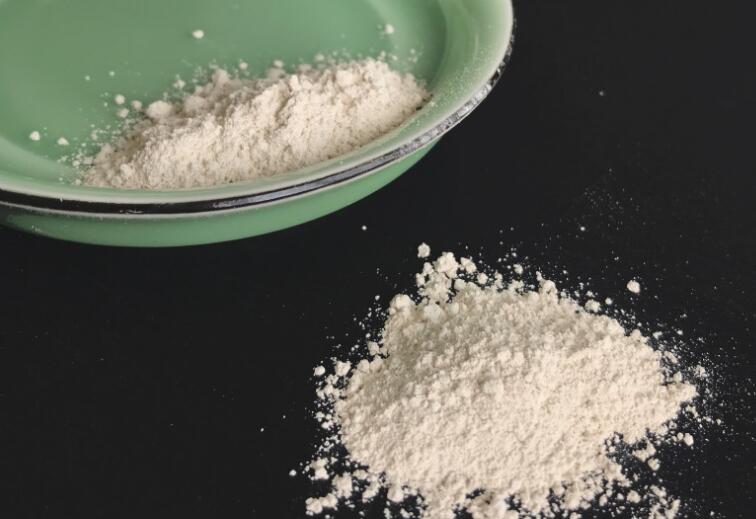Effect of Reactivity of Light-burned Magnesium Oxide on Deformation Sensitivity of Cement Paste
Light-burned magnesia (LBM), as a common mine ral admixture, has been widely used in cement-based materials due to its good chemical activity and durability. However, the reactivity of light-burned magnesia has a great influence on its behavior in cement paste, especially on the deformation sensitivity of cement paste. This paper will explore the effect of the reactivity of light-burned magnesia on the deformation sensitivity of cement paste and analyze its mechanism.
ral admixture, has been widely used in cement-based materials due to its good chemical activity and durability. However, the reactivity of light-burned magnesia has a great influence on its behavior in cement paste, especially on the deformation sensitivity of cement paste. This paper will explore the effect of the reactivity of light-burned magnesia on the deformation sensitivity of cement paste and analyze its mechanism.
Introduction to light-burned magnesia
Light-burned magnesia is a powdery material obtained by low-temperature roasting (usually at 750-1000°C) of magnesite or other magnesium sources. Because it is roasted at a lower temperature, it retains a certain degree of chemical activity, so it can undergo secondary hydration reaction with hydration products in cement-based materials to generate hydrated magnesium calcium silicate (C-S-H) gel, etc., thereby improving the performance of cement paste.
Effect of reactivity on deformation sensitivity of cement paste
Definition of reactivity
The reactivity of light-burned magnesia refers to its ability to react with hydration products in cement-based materials. Reactivity is usually determined by factors such as chemical composition, crystal structure, and particle fineness.
Highly active light-burned magnesium oxide can participate in the hydration reaction faster in cement-based materials and form more hydration products, thereby affecting the microstructure and macroscopic properties of cement paste.
Impact on deformation sensitivity of cement paste
Highly active light-burned magnesium oxide: Highly active light-burned magnesium oxide can react quickly with hydration products in cement-based materials to generate a large amount of hydration products. The generation of these hydration products will cause volume expansion, thereby increasing the deformation sensitivity of cement paste.
Low-activity light-burned magnesium oxide: Low-activity light-burned magnesium oxide reacts slowly in cement-based materials and generates fewer hydration products, so it has less effect on the deformation of cement paste.
Deformation sensitivity mechanism
Volume expansion: Hydration products such as hydrated magnesium calcium silicate (C-S-H) gel generated by the reaction of light-burned magnesium oxide with hydration products will expand in volume, which will cause stress inside the cement paste, thereby increasing its deformation sensitivity.
Microstructure changes: The reaction of light-burned magnesium oxide will affect the microstructure of cement paste, including pore distribution, morphology of hydration products, etc. These changes will affect the elastic modulus and Poisson's ratio of cement paste, and then affect its deformation performance.
Interface effect: The interface properties between light-burned magnesium oxide and cement matrix will also change. The strength and stability of the interface have an important influence on the overall deformation sensitivity of cement paste.
Experimental method
Sample preparation
Prepare samples of cement-based materials with light-burned magnesium oxide admixtures of different reactivity, and adjust its reactivity by controlling the preparation conditions of light-burned magnesium oxide (such as roasting temperature, time, etc.).
Light-burned magnesium oxide is added to cement-based materials in a certain proportion to prepare standard specimens.
Performance test
X-ray diffraction (XRD) analysis: The crystal phase structure of light-burned magnesium oxide is analyzed by XRD to evaluate its reactivity.
Thermogravimetric analysis (TGA): The thermal weight loss behavior of light-burned magnesium oxide is analyzed by TGA to further evaluate its reactivity.
Mechanical property test: The mechanical properties of cement paste are evaluated by mechanical property tests such as compression test and tensile test.
Deformation test: The deformation performance of cement paste was tested by three-point bending test, direct tensile test and other methods to evaluate its deformation sensitivity.
Microstructure analysis: The microstructure of cement paste was observed by scanning electron microscopy (SEM) to evaluate the effect of light-burned magnesia on the microstructure of cement paste.
Results and discussion
Relationship between reaction activity and deformation sensitivity
The experimental results show that with the increase of the reaction activity of light-burned magnesia, the deformation sensitivity of cement paste also increases. This is because highly active light-burned magnesia can generate more hydration products faster in cement-based materials, resulting in volume expansion, thereby increasing the deformation sensitivity of cement paste.
Low-activity light-burned magnesia has less effect on the deformation of cement paste. Its reaction speed in cement-based materials is slower and generates fewer hydration products, so it has less effect on the deformation of cement paste.
Changes in microstructure
Microstructure analysis shows that the addition of highly active light-burned magnesia will lead to changes in the pore distribution inside the cement paste, forming more microcracks and pores. These changes will reduce the strength and stiffness of the cement paste, thereby increasing its deformation sensitivity.
Low-activity light-burned magnesia has little effect on the microstructure of cement paste. Its reaction rate in cement-based materials is slow, and the generated hydration products are less, so it has little effect on the microstructure of cement paste.
Interface effect
After the addition of light-burned magnesia, the interface properties between it and the cement matrix have changed, and the strength and stability of the interface have an important influence on the overall deformation sensitivity of cement paste. High-activity light-burned magnesia will lead to reduced interface strength, thereby increasing the deformation sensitivity of cement paste.
The reactivity of light-burned magnesia has a great influence on its behavior in cement paste, especially on the deformation sensitivity of cement paste. High-activity light-burned magnesia will increase the deformation sensitivity of cement paste, while low-activity light-burned magnesia has little effect on the deformation of cement paste. By rationally controlling the reactivity of light-burned magnesia, the performance of cement paste can be improved and its deformation sensitivity can be reduced. Future research will further explore the application of light-burned magnesia in cement-based materials and optimize its blending ratio and preparation process to improve the overall performance of cement paste.








